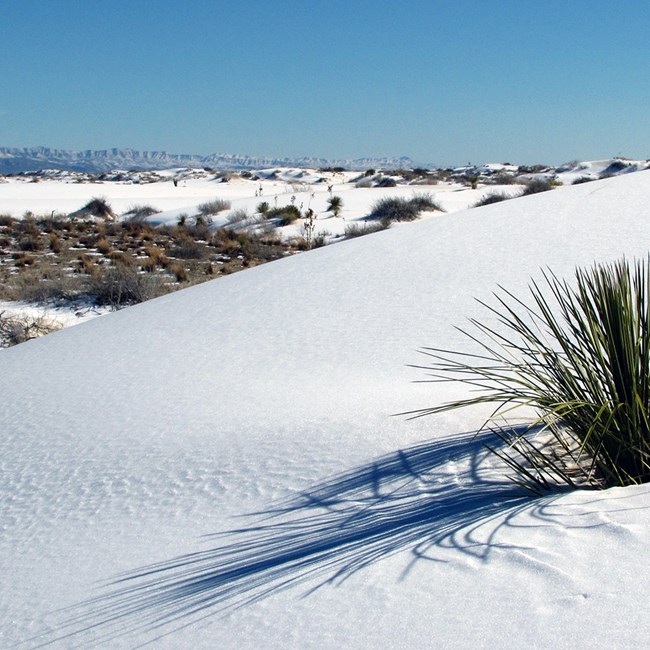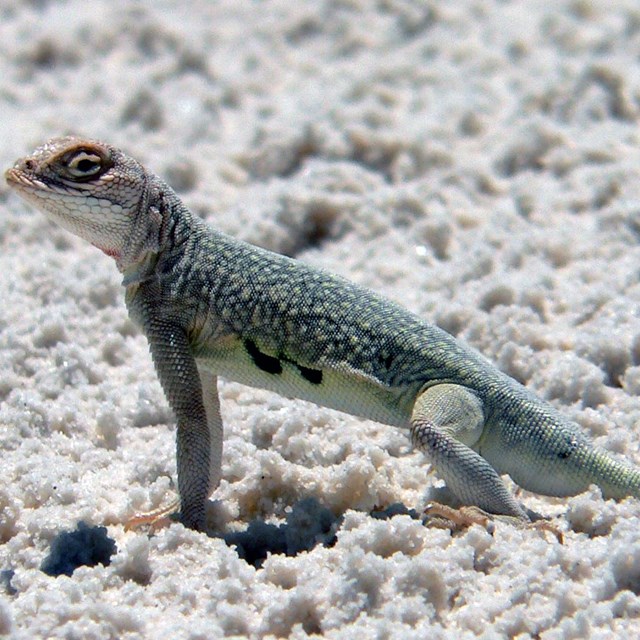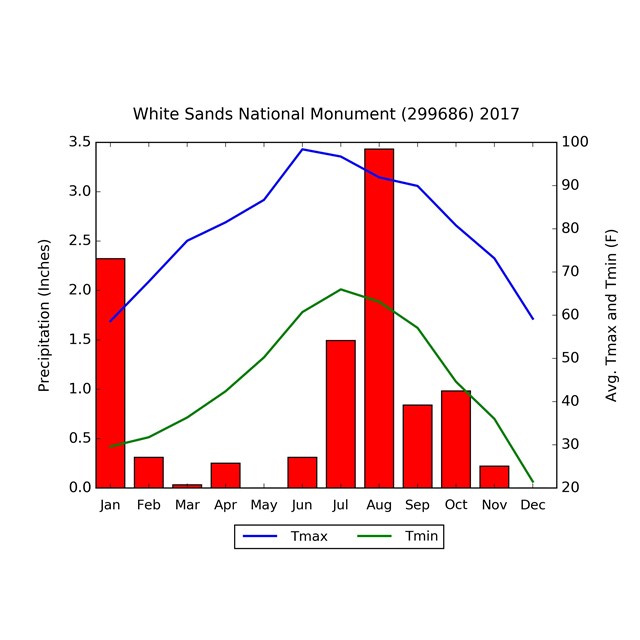
NPS Photo
The largest gypsum dune field in the world is located at White Sands National Park in south-central New Mexico. About 40% of the 275 square miles of this dune field are located within the monument. The pure gypsum that forms these unusual dunes originates in the western portion of the monument from an ephemeral (short-lived) lake or playa with a very high mineral content. As the water evaporates, the minerals are left behind to form gypsum deposits that are moved by wind to form dunes. Elevation on the park ranges from 1,186 meters (3,891 feet) at Lake Lucero to 1,254 meters (4,114 feet) in the foothills of the San Andres Mountains on the west side of the park. Average annual precipitation is approximately 20 centimeters (8 inches).
The park contains desert and semi-desert grasslands and desert scrub and woodlands. Many species of plants and animals have developed very specialized means of surviving in this area of cold winters, hot summers, very little surface water, and highly mineralized groundwater. Plants in the park are drought tolerant, typical of plants in the Chihuahuan Desert, and many are adapted to alkaline, nutrient-poor soils with high gypsum concentrations.
White Sands National Park is home to 302 plant species from 53 families. Vertebrates in the park include one fish species, 38 reptile and amphibian species, 52 mammal species, and 246 bird species. Some of these species have pale or light phases of coloration to better blend in with their surroundings. We monitor air quality, climate, dune dynamics, groundwater, landbirds, springs, seeps, and tinajas, and terrestrial vegetation and soils at this park.
-
 Species Lists
Species ListsFind species lists for this park here
-
 Climate Analyzer
Climate AnalyzerFind climate data for this park here
Reports & Articles
Read more about our work at this park in the resource briefs (short summaries), monitoring reports (detailed results), condition assessment (natural resource conditions), and web articles below. An interactive bird checklist for this park is also available here. Inventories (baseline reports and lists of natural resources) and protocols (monitoring procedures) can be found on our reports & publications pages.
Source: NPS DataStore Collection 5479. To search for additional information, visit the NPS DataStore.
Source: NPS DataStore Saved Search 3514 (results presented are a subset). To search for additional information, visit the NPS DataStore.
Source: NPS DataStore Collection 3705 (results presented are a subset). To search for additional information, visit the NPS DataStore.
Source: NPS DataStore Saved Search 1041 (results presented are a subset). To search for additional information, visit the NPS DataStore.
Source: NPS DataStore Saved Search 3353 (results presented are a subset). To search for additional information, visit the NPS DataStore.
Web Articles
Last updated: May 14, 2021
